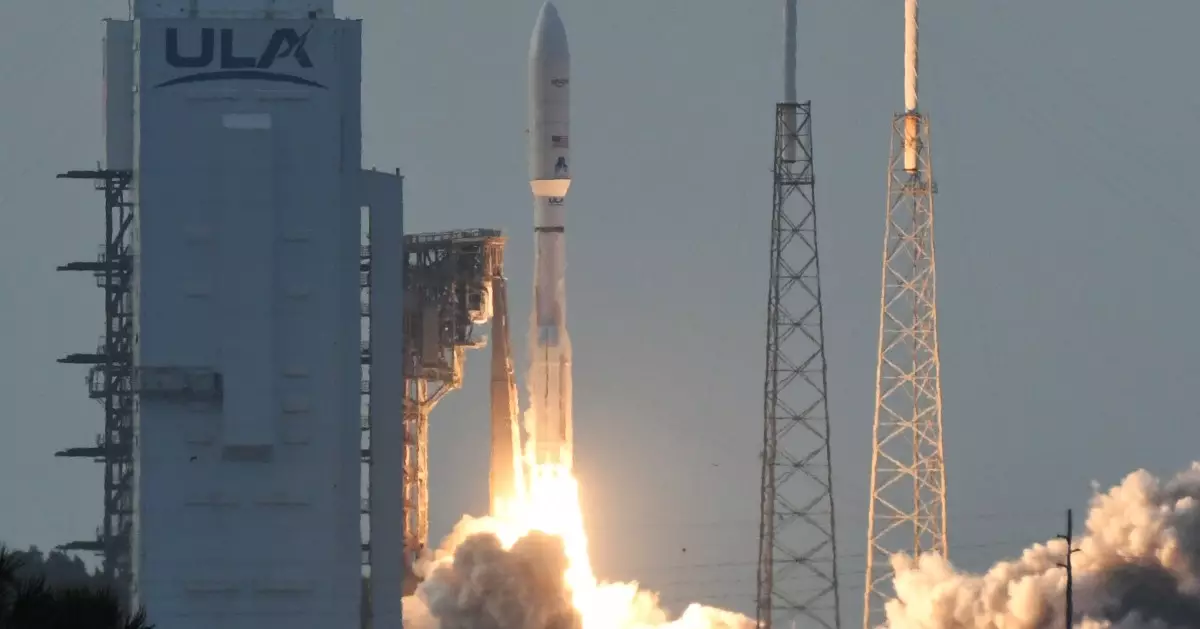In an age where connectivity is pivotal to both personal and professional realms, Amazon is taking significant strides to reshape the satellite internet landscape with its ambitious Project Kuiper. With the successful deployment of the inaugural 27 satellites, Amazon enters a competitive arena that has largely been dominated by SpaceX’s Starlink. This pivotal moment not only marks the beginning of Amazon’s journey into low-Earth orbit but also underscores the relentless pursuit of innovation in an effort to reshape how the world accesses the internet. Compared to traditional infrastructures, satellite internet has the potential to reach even the most isolated regions, thus bridging the digital divide.
Unveiling Launch Success Amidst Challenges
The launch of the first batch of Kuiper satellites, facilitated by United Launch Alliance’s Atlas V rocket, is a monumental achievement for Amazon. Launched from Cape Canaveral, this operation highlights the meticulous planning and deft execution that goes into aerospace missions. Despite facing a weather-related setback during its initial launch attempt, the trajectory to deployment became a testament to Amazon’s resilience and commitment to overcoming obstacles. Andy Jassy, Amazon’s CEO, celebrated the success as a collective triumph born from innovation and hard work. It’s an important reminder of the tenacity required in the tech sector — a crucial lesson when venturing into uncharted territories.
Connecting the World: Ambitions Behind the Launch
With the aim of deploying over 3,000 satellites, Project Kuiper is positioned not just as a competitor but as a transformative force in the realm of satellite communications. The goal is not merely to counteract SpaceX’s existing infrastructure but also to carve out a niche that promises “high-speed, low-latency” service to consumers, particularly in underserved regions. By successfully establishing a constellation of satellites 280 miles above Earth, Amazon aligns itself with the broader movement of expanding internet access globally. As CEO Jassy puts it, this launch is merely the inception of a “much longer journey,” setting a visionary benchmark for future developments in satellite technology.
A Competitive Landscape: Kuiper vs. Starlink
As Project Kuiper begins its ascent, it’s nearly impossible to overlook the formidable presence of Starlink. SpaceX has already demonstrated significant momentum, boasting over 7,200 operative satellites and a series of successful deployments. With regulatory green lights for expansion to 34,400 satellites, the stakes are high, and the competition is tightening. Amazon’s challenge lies not only in launching its satellites but in delivering a service that matches or exceeds what consumers currently experience with Starlink. With an FCC-imposed deadline mandating a substantial portion of its satellites to be operational by mid-2026, time is of the essence. The gap in operational satellites signifies a sprint that could further intensify Amazon’s competitive strategy.
The Future of Satellite Internet: Opportunities and Challenges
As we watch this situation unfold, the implications of widespread satellite internet access are profound. Project Kuiper promises to open the door to unprecedented opportunities—enhanced connectivity for educational institutions, healthcare services, and rural communities that have long been deprived of reliable internet. However, these ambitions come with their own challenges. The proliferation of satellites has raised concerns regarding space debris and orbital congestion, which could pose risks to existing and future missions. In this context, responsible stewardship of space becomes imperative. The potential for collaboration among companies to mitigate these risks could pave the way for a harmonious coexistence in the burgeoning landscape of satellite internet.
The Road Ahead: A New Era of Connectivity?
Project Kuiper’s commencement is not simply about launching satellites; it’s about crafting a vision for a more connected world. This mission has the potential to reshape the very fabric of global connectivity, making it imperative for Amazon to not only keep pace with its competitors but also spearhead innovations that could redefine how we interact with technology. As the race unfolds, the outcome will not only determine the victor between Amazon and SpaceX but also inspire future endeavors in satellite technology, ultimately shaping a new era for internet accessibility worldwide.


Leave a Reply